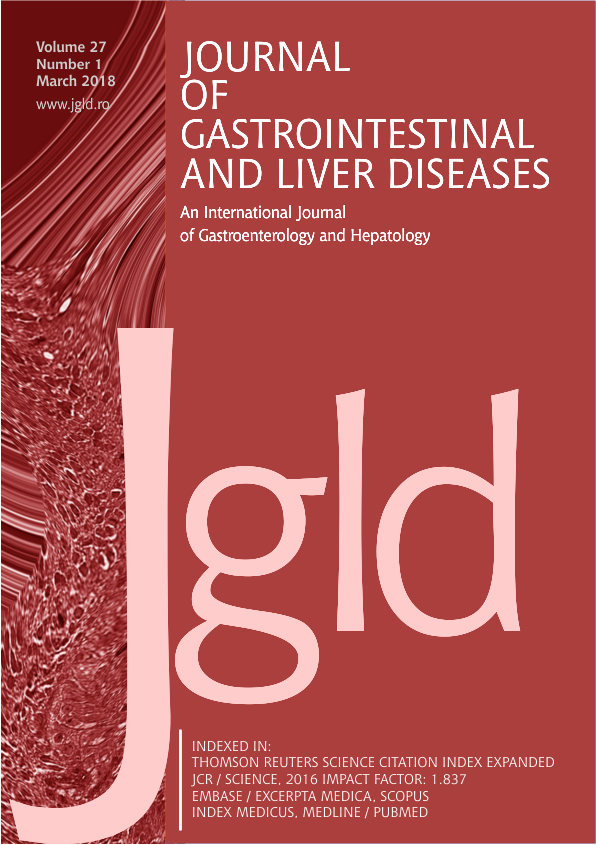A Multi-strain Probiotic Reduces the Fatty Liver Index, Cytokines and Aminotransferase levels in NAFLD Patients: Evidence from a Randomized Clinical Trial
DOI:
https://doi.org/10.15403/jgld.2014.1121.271.kbyKeywords:
probiotics, NAFLD, cytokine, aminotransferase, fatty liver index, liver stiffnessAbstract
Background: Probiotics have a beneficial effect on nonalcoholic fatty liver disease (NAFLD) in animal models. Randomized placebo-controlled trials (RCTs) in NAFLD are still lacking in humans despite a large number of data from animal research.
Aim: We performed a double-blind single center RCT of live multi-strain probiotic vs. placebo in type 2 diabetes patients with NAFLD.
Methods: A total of 58 patients met the criteria for inclusion. They were randomly assigned to receive the multiprobiotic “Symbiter” (concentrated biomass of 14 probiotic bacteria genera Bifidobacterium, Lactobacillus, Lactococcus, Propionibacterium) or placebo for 8-weeks administered as a sachet formulation in double-blind treatment. The primary main outcomes were the changes in fatty liver index (FLI) and liver stiffness (LS) measured by Shear Wave Elastography (SWE). Secondary outcomes were the changes in aminotransferase activity, serum lipids and cytokines (TNF-α, IL-1β, IL-6, IL-8, and IFN-γ) levels. Analysis of covariance was used to assess the difference between groups.
Results: In the probiotic group, FLI significantly decreased from 84.33±2.23 to 78.73±2.58 (p<0.001) but it did not change in the placebo group (82.57±2.45 to 81.6 ±2.36; p=0.367). In both groups a slight but not significant reduction of LS measured by SWE was detected. Analysis of the secondary outcomes showed that probiotics reduced the level of serum AST and GGT. Among the markers of chronic systemic inflammatory state, only TNF-α and IL-6 levels changed significantly after the treatment with the probiotic.
Conclusion: The probiotic “Symbiter” reduces liver fat, aminotransferase activity, and the TNF-α and IL-6 levels in NAFLD patients. Modulation of the gut microbiota might represent a new therapy for NAFLD, which should be tested in larger studies.


